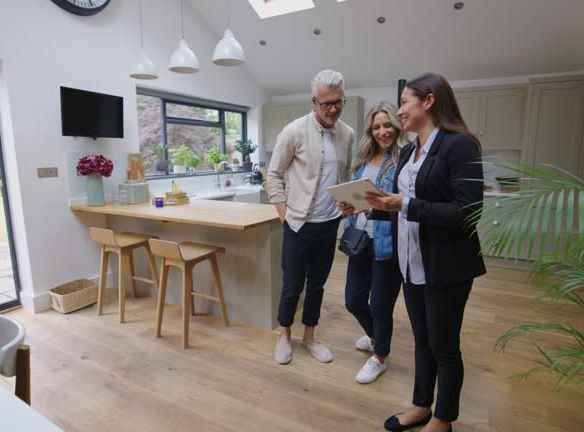Let me show you something important: selling a home after divorce in the UK isn’t just about bricks and mortar. It’s about emotions, memories, and, often, the chance to start over. Whether you’re selling a flat in Croydon or a semi-detached house in Leeds, this guide is here to help you move forward calmly and confidently.
Divorce is already a storm. This article is your umbrella.
We’ll walk through everything you need, from understanding legal responsibilities to getting the right valuation and handling viewings when it’s still emotionally raw. You’re not alone, and there is a way through.
Why Selling the Home Matters After Divorce
The home is often the biggest shared asset in a marriage. In the UK, the courts see it as part of the “marital pot.” Selling the home can:
- Help both parties financially restart
- Prevent ongoing conflict about who stays and who pays
- Clear up legal and mortgage responsibilities
It’s not just practical, it’s powerful. It’s the first major decision in creating new, separate lives.
Step 1: Know Your Legal Standing First
Check Ownership
Is the home in both names? Just one? Or as joint tenants or tenants in common?
You can check ownership via the HM Land Registry for a small fee. This tells you who legally owns the home, which matters when deciding who can sell.
Divorce Financial Agreement (Consent Order)
Before you sell, make sure you have a legally binding financial agreement. A “consent order” confirms who gets what and helps avoid future disputes.
Speak to a solicitor or check Citizens Advice UK for free legal guidance on how to structure this.
Step 2: Talk to Your Mortgage Lender
If there’s a mortgage, both parties remain liable until it’s paid off—even if one person moves out. This means:
- You both need to agree to sell
- You must keep paying monthly repayments until the house is sold
- Missed payments can affect both credit scores
Let me tell you, contacting your lender early can save you a lot of stress. Some UK banks even offer mortgage advice for separated couples.
Step 3: Get an Accurate Valuation
In this situation, you want fair, neutral, and clear. Ask three different estate agents for a free valuation. Compare what they say and consider getting a RICS-qualified surveyor for an unbiased assessment.
Example: A couple in Birmingham selling a 3-bedroom semi had valuations that ranged from £270,000 to £295,000. By averaging and cross-checking with the JP listings home valuation tool, they agreed on a fair listing price.
Step 4: Choose the Right Estate Agent
This is not just any sale. You need an agent who is sensitive, professional, and great at communication. Ask them:
- Have you handled divorce sales before?
- Can you deal with two points of contact?
- What’s your approach to urgent or emotional sales?
Tip: Check for estate agents accredited with The Property Ombudsman for a higher standard of conduct.
Step 5: Agree on the Process Early
Before listing the home, sit down (with or without solicitors) and agree on:
- Listing price
- Who pays for what (repairs, solicitor fees, etc)
- How viewings will work
- What happens with offers
Let me be clear: document everything. Misunderstandings during this time can spiral.
Step 6: Preparing the Home for Viewings
Easier said than done when emotions are raw. But a calm, neutral space sells better.
Tips:
- Remove personal items (wedding photos, etc.)
- Repair visible wear and tear
- Use soft lighting and neutral smells
- Keep rooms clean and clutter-free
If possible, stage it like a hotel, not a memory box.
Step 7: Handling Offers and Negotiations
Once offers come in, the pressure can rise. But remember, you both want a fresh start.
Work with your estate agent to:
- Review offers together
- Respond quickly and calmly
- Negotiate clearly (your agent can help mediate)
You can set a rule to only communicate through the agent if direct contact gets too tense.

Step 8: Understand the Tax Side
Good news: if the house was your main residence, there’s usually no Capital Gains Tax (CGT).
But if one party moved out more than 9 months ago, or you’ve rented it out since, CGT may apply. Read more on GOV.UK Capital Gains Tax guide.
Always double-check with a solicitor or accountant.
Step 9: Splitting the Sale Proceeds
This is where your consent order kicks in.
Examples of splits:
- 50/50 if ownership was equal
- 60/40 or 70/30 if one party paid more into the mortgage
- One partner takes less cash but keeps other marital assets (e.g., pension, car)
Work out a fair arrangement—and put it in writing.
Step 10: Starting Fresh
Once the home is sold:
- Close joint bank accounts tied to the mortgage
- Update your address on your driving licence, bank, and voting registration
- Consider financial coaching or therapy, as many local UK charities offer free support
This isn’t just an end, it’s a beginning.
Real UK Stories: You’re Not Alone
Sophie from Bristol shared: “Selling our home after divorce was hard, but the moment I got the keys to my new place, I cried with relief. It felt like my life was mine again.”
Paul from Derby said: “We disagreed a lot, but getting a good agent made all the difference. They kept things neutral, and we both got what we needed.”
These stories are real. And yours will be too—written one step at a time.
Final Thoughts: Keep It Calm, Keep It Fair
Selling a home after divorce in the UK is never easy. But with clarity, patience, and the right support, it can become part of your healing, not your headache.
Let me leave you with this: You’re not just selling a house. You’re buying your peace.
If you need free legal or emotional help, try:
- Citizens Advice
- Relate UK for divorce counselling
- MoneyHelper for financial support
Start fresh—with guidance, not guesswork.
Recap Checklist: Selling a Home After Divorce in the UK
- Check property ownership and legal rights
- Speak to your mortgage lender
- Agree on a consent order
- Get accurate valuations
- Choose the right estate agent
- Prepare the home emotionally and physically
- Handle offers calmly
- Understand tax implications
- Split proceeds fairly
- Start your new chapter with clarity
You’ve got this!





Join The Discussion